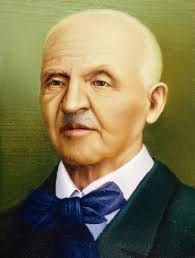Introduction
Anton Bruckner’s Symphony No. 5 in B-flat Major stands as one of the composer’s most intellectually and structurally complex works. Known as the “Tragic” or even the “Catholic” symphony due to its majestic counterpoint and spiritual grandeur, this masterpiece showcases Bruckner’s mastery of symphonic form and his deep-rooted faith. Though it was composed in relative obscurity and not performed in full during his lifetime, today it is hailed as one of his greatest achievements.
The Context of Its Creation
Anton Bruckner composed the Symphony No. 5 between 1875 and 1876, during a tumultuous period in his life. He had recently taken up a teaching position at the University of Vienna, and his music was struggling to gain widespread acceptance. Criticism from the supporters of Johannes Brahms, particularly the influential critic Eduard Hanslick, weighed heavily on Bruckner.
Despite this, he continued to compose with conviction. The Fifth Symphony emerged during a time when he was revising earlier works and seeking to define his own voice in the shadow of Beethoven and Wagner. The result was a symphony of unprecedented ambition, rich in fugues, chorales, and dramatic contrasts.
Structure and Musical Features
The Symphony No. 5 follows the traditional four-movement structure but elevates it with immense architectural logic:
- Adagio – Allegro: The first movement opens with a mysterious introduction, followed by a sonata form rich in tension and development. Bruckner’s use of silence and abrupt harmonic shifts adds to its dramatic effect.
- Adagio: This slow movement unfolds with profound solemnity, featuring a dialogue between strings and woodwinds that suggests a deep spiritual meditation. It’s one of Bruckner’s most heartfelt slow movements.
- Scherzo – Molto vivace: The third movement is characterized by rhythmic vitality and Austrian folk dance influences. The contrasting trio section offers lyrical respite.
- Finale – Adagio – Allegro moderato: The crowning achievement of the symphony. This movement is a contrapuntal tour de force, culminating in a massive double fugue and a majestic chorale. The return of themes from earlier movements gives the work a sense of cyclical unity.
Performance History and Revisions
Bruckner never heard the original orchestration of his Fifth Symphony performed. The premiere took place in Graz in 1894, two years before his death, and was conducted by Franz Schalk—using a heavily edited version with significant changes, cuts, and re-orchestrations.
It wasn’t until the 1930s that Bruckner’s original score began to receive proper recognition. The critical edition prepared by Robert Haas and later Leopold Nowak aimed to restore the composer’s authentic voice. These versions are now the standard in modern performances.
Reception and Legacy
Initially overlooked, Symphony No. 5 has grown in esteem among both scholars and audiences. Its blend of intellectual rigor and spiritual expression makes it a cornerstone of Bruckner’s symphonic output. The work exemplifies his unique synthesis of Classical form and Romantic depth, and it has influenced generations of composers, including Gustav Mahler and even 20th-century modernists.
Conductors such as Eugen Jochum, Günter Wand, and Herbert von Karajan have championed the symphony, each bringing out its architectural majesty and emotional intensity in various recordings.
Conclusion
Anton Bruckner’s Symphony No. 5 in B-flat Major is more than a symphony—it is a monumental expression of faith, structure, and perseverance. Composed in relative obscurity and misunderstood in its early years, it now stands as a testament to Bruckner’s genius and his unwavering belief in the power of music. For listeners today, the Fifth Symphony offers a profound journey into the heart of one of the 19th century’s most singular musical minds.


Comments are closed